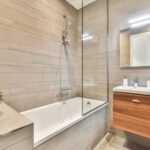Are you wondering how to start decorating your home? Whether you’ve just moved into a new space or are looking to refresh your current one, home decor is an important aspect of creating a comfortable and inviting environment. Your home should be a reflection of your personal style and needs, and the right decor can help to achieve that.
Assessing your space is the first step in the process of decorating your home. Understanding your personal style and needs will help you make the best decisions when it comes to selecting decor pieces. From budgeting for decor to creating a mood board, there are various aspects to consider before diving into the world of home decoration.
This article will guide you through the process of starting to decorate your home, from finding affordable and quality pieces to adding DIY touches and finishing touches. By the end, you’ll be well on your way to creating a space that you can truly take pride in. So let’s get started on transforming your house into a home.
Assessing Your Space
When it comes to decorating your home, it’s important to start by assessing your space and understanding your personal style and needs. This step is crucial because it sets the foundation for the rest of your home decor journey. By understanding what you like and need, you can make informed decisions that will result in a space that truly reflects your personality and lifestyle.
Personal Style
One of the first steps in assessing your space is identifying your personal style. Do you prefer a modern and minimalistic look? Or are you drawn to more traditional or eclectic designs? Take the time to browse through home decor magazines, websites, and social media platforms to gather inspiration and pinpoint the elements that resonate with you. Creating a mood board can also help visualize your preferred style and narrow down specific design elements that appeal to you.
Functional Needs
In addition to personal style, it’s important to consider the functional needs of your space. Do you require extra storage for all your belongings? Will you be hosting gatherings and need ample seating options? Understanding how you actually use each room in your home will help guide furniture choices, layout decisions, and overall decor schemes. For example, if you have kids or pets, durability and practicality may be more important factors than aesthetics alone.
By taking the time to assess your space, personal style, and functional needs, you’ll be better equipped to create a home decor plan that aligns with who you are as an individual. This thoughtful approach will ultimately lead to a well-decorated home that brings joy and comfort to both you and your guests.
Budgeting for Decor
When it comes to decorating your home, one of the most important aspects to consider is budgeting for decor. Finding affordable and quality pieces can be a daunting task, but with the right approach, you can create a beautifully decorated space without breaking the bank. In this section, we will explore some tips and strategies for finding budget-friendly yet high-quality home decor items.
Setting a Realistic Budget
Before you start shopping for home decor, it’s essential to set a realistic budget for your project. Take some time to assess your finances and determine how much you can comfortably spend on decorating your home. Consider prioritizing certain areas or rooms in your home that are in need of the most attention. By setting a budget from the outset, you can avoid overspending and ensure that you make informed purchasing decisions.
Shopping Smart: Sales, Secondhand, and Clearance
One of the best ways to find affordable yet quality decor pieces is by shopping smart. Keep an eye out for sales, clearance events, and discounts at your favorite home decor stores. Additionally, consider exploring secondhand options such as thrift stores, consignment shops, and online marketplaces where you might find unique and inexpensive treasures. With a little patience and persistence, you can discover beautiful decor items at a fraction of their original cost.
DIY Decor: Cost-Effective Personal Touches
Another way to stick to your budget while decorating your home is by incorporating DIY decor projects. Adding personal touches to your space through handmade items not only adds character but also helps save on costs. Whether it’s creating custom artwork, crafting decorative accents, or upcycling furniture, DIY projects can be a cost-effective way to enhance your home’s decor while infusing it with your personality.
By following these budgeting tips and strategies for finding affordable yet quality pieces, you can kickstart the process of decorating your home without overspending. Remember that creating a beautifully decorated space doesn’t have to mean emptying your wallet – with careful planning and resourcefulness, you can achieve stunning results while staying within budget.
Creating a Mood Board
When it comes to decorating your home, creating a mood board is a crucial step in visualizing your ideal home decor. A mood board is a collage of images, fabrics, textures, and colors that represent the style and atmosphere you want to achieve in your living space. It serves as a visual guide that helps you stay focused on your decor goals and ensures that all the elements in your home work cohesively together.
To start creating your mood board, gather inspiration from various sources such as interior design magazines, Pinterest boards, or even by taking photos of spaces you admire. Consider the overall aesthetic you’re drawn to – whether it’s modern and minimalist, bohemian and eclectic, or classic and traditional. This will help you narrow down the specific styles and elements you want to incorporate into your own home.
Once you have collected enough inspiration, organize them into a digital or physical collage. You can use online tools like Canva or Adobe Spark for digital collages, or simply create a physical board using corkboard or poster board. Arrange the images, swatches, and other visual elements in a way that reflects the flow and vibe you want for each room in your home.
After creating your mood board, use it as a reference when sourcing for decor items such as furniture, wall art, rugs, and other accessories. This will ensure that every piece you bring into your home aligns with the cohesive look you’ve envisioned. Ultimately, creating a mood board not only helps clarify your design direction but also makes the decorating process more organized and enjoyable.
DIY Decor
When it comes to decorating your home, adding personal touches is a great way to make your space truly unique and reflective of your personality. Whether you’re on a budget or simply enjoy crafting, DIY decor can be a fun and rewarding aspect of home decorating. Here are some ideas on how to add personal touches to your space:
- Create custom wall art: Express your creativity by making your own artwork to display in your home. Whether it’s painting, photography, or mixed media, custom art can add a personal touch to any room.
- Upcycle furniture and decor: Instead of buying new items, consider upcycling or repurposing old furniture and decor pieces. This not only adds a personalized touch to your space but also reduces waste and saves money.
- Add homemade textiles: From throw pillows to curtains, adding handmade textiles can bring warmth and character to your home. Consider sewing or knitting your own soft furnishings for a cozy and unique look.
Incorporating DIY decor into your home not only adds personal touches but also allows you to express yourself creatively. Keep in mind that the key is finding projects that align with your style and skills. By adding these custom elements, you’ll create a space that feels truly one-of-a-kind.
Furniture and Layout
When it comes to decorating your home, furniture and layout play a crucial role in maximizing space and functionality. The way you arrange your furniture can significantly impact the flow and overall look of your space. Whether you are working with a small apartment or a spacious house, understanding how to effectively design and layout your furniture can make a world of difference.
Before diving into purchasing new furniture, start by assessing the layout of your space. Consider the function of each room and the traffic flow within it. Take accurate measurements to ensure that the furniture you choose fits perfectly in the designated areas. Additionally, consider creating a floor plan to help visualize how different pieces will fit together in each room. This step is essential in maximizing both space and functionality.
It’s also important to consider multi-functional furniture pieces that can serve more than one purpose. For example, a sofa bed or ottoman with storage can provide extra sleeping accommodations or storage space without sacrificing style. By choosing furniture that serves multiple purposes, you can optimize your space while maintaining functionality.
Lastly, don’t forget to consider the scale of your furniture in relation to the size of your rooms. Oversized furniture in a small space can make the room feel cramped, while too many small pieces in a large room can make it feel cluttered. Finding the right balance will create a harmonious and functional living space for you and your family.
Color and Texture
When it comes to home decor, color and texture play a crucial role in adding depth and personality to your space. The right combination of colors can create a certain mood or atmosphere, while different textures can add visual interest and tactile appeal. Here’s how to start decorating your home by incorporating color and texture effectively.
First, consider the mood you want to create in each room of your home. For example, if you want a cozy and intimate feel in your living room, consider using warm and rich colors like deep reds or earthy tones.
On the other hand, if you want a calming and serene atmosphere in your bedroom, opt for cool and soothing colors like soft blues or light greens. Understanding the psychology of color can help you make informed decisions about the color palette for each room.
In addition to color, incorporating different textures into your decor can elevate the look of your space. Mix and match textures such as smooth fabrics, rough wood surfaces, shiny metallic accents, and plush rugs to create visual contrast and add dimension to your rooms. Consider using different textures in upholstery, drapery, throw pillows, and decorative accessories to bring visual interest to your decor.
| Colors | Textures |
|---|---|
| Warm Colors (reds, yellows) | Smooth Fabrics |
| Cool Colors (blues, greens) | Rough Wood Surfaces |
| Neutral Colors (whites, grays) | Shiny Metallic Accents |
By understanding how color and texture work together in home decor, you can effectively add depth and personality to your space. Whether you’re painting walls, selecting furniture upholstery, or choosing decorative accessories, thoughtful consideration of color combinations and textural elements will help bring cohesiveness and visual appeal to your home decor.
Final Touches
When it comes to decorating your home, the final touches and decorative accents can truly make a difference in the overall look and feel of your space. These finishing touches are what tie everything together and add that personal touch to your home decor. Whether it’s a unique piece of wall art, a colorful throw pillow, or a statement rug, these small details can elevate the design of any room.
One way to approach adding decorative accents to your home is by thinking about the overall theme or style you want to achieve. For example, if you’re going for a modern and minimalist look, you may want to choose sleek and simple decorative pieces that won’t overwhelm the space. On the other hand, if you’re aiming for a more eclectic and bohemian vibe, you can experiment with bold patterns, textures, and colors in your decorative accents.
In addition to decorative accents, don’t forget about the finishing touches that can really make a room feel complete. This could include things like stylish curtain rods and finials, coordinating switch plates and outlet covers, or even updating hardware on furniture pieces. These small details may seem insignificant, but they can definitely contribute to the overall cohesiveness of your home decor.
In summary, when it comes to adding final touches and decorative accents to your home decor, it’s important to consider your personal style and the theme of each room. These elements are what give your space personality and character. So take some time to carefully select these finishing touches and enjoy seeing how they bring your newly decorated home together.
Conclusion
In conclusion, embarking on the journey of home decorating is an exciting and rewarding process that allows you to truly make your space your own. By following the steps outlined in this article – from assessing your space and budgeting for decor to creating a mood board and adding personal touches through DIY projects – you can start the process with confidence and creativity.
It’s important to remember that while there are practical considerations such as budgeting and furniture layout, home decorating is ultimately about expressing your personal style and creating a space where you feel comfortable and inspired.
By taking the time to assess your personal style and needs, you can ensure that the decor in your home truly reflects who you are and what makes you feel at home. Whether it’s choosing furniture that maximizes space and functionality, or selecting colors and textures that add depth and personality to your rooms, every decision should be a reflection of your unique taste.
Additionally, utilizing DIY decor projects can add an extra layer of personalized charm to your space, making it feel uniquely yours.
As you complete the final touches on your newly decorated home, take pride in knowing that every decision was made with care and consideration. Your home should be a place where you find joy and comfort, so don’t rush the decorating process.
Enjoy every step along the way, from finding affordable pieces to adding decorative accents – after all, there’s no greater feeling than finally seeing your vision come to life. With these guidelines in mind, anyone can confidently begin the process of transforming their living space into a personalized sanctuary.

I’m thrilled to be your companion on this exciting journey through the world of home decor and design. With a passion for turning houses into homes and a keen eye for the finer details, I’m here to help you transform your living spaces into beautiful, functional, and meaningful havens.





